Deep Roots on New Ice
The NHL Stadium Series outdoor game takes place this weekend at NC State's own Carter-Finley Stadium. But professional hockey in the South began more than 70 years ago — at Reynolds Coliseum.
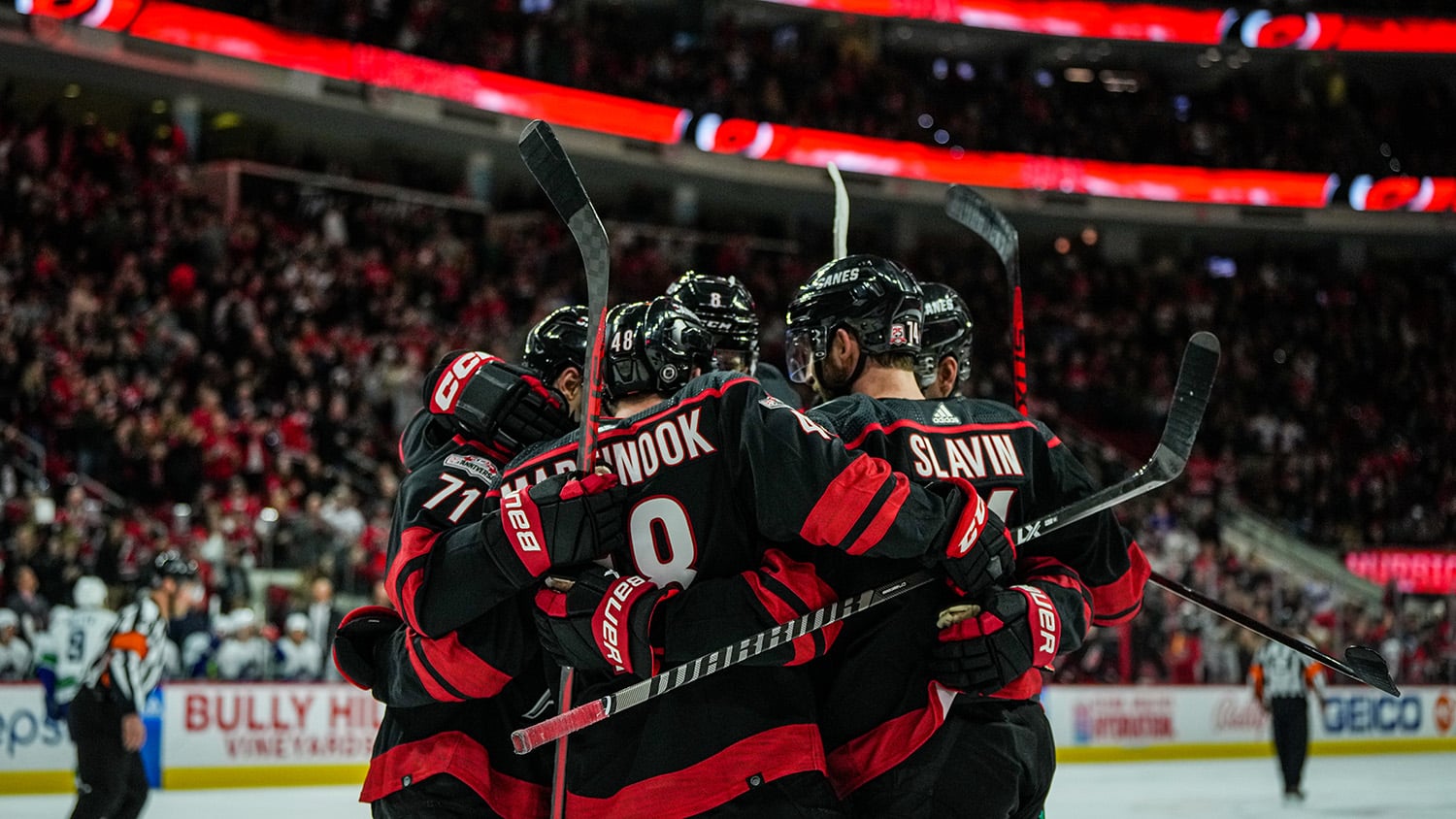
The Carolina Hurricanes are hot, leading the Eastern Conference’s Metropolitan Division with 35 wins and 10 losses.
And the outdoor ice rink now installed at Carter-Finley Stadium seems to be sufficiently cold to host an NHL Stadium Series game that will put Raleigh and NC State in hockey’s spotlight for a nationally televised audience and a sold-out crowd of more than 57,000 spectators.
“This will be a celebration of hockey and the Hurricanes, of course, but it will also celebrate all things NC State,” says NHL Executive Vice President for Content and Events Steve Mayer. “From a creative standpoint, we are going to go all in on NC State, whether it’s the alumni, the marching band or other elements you might see during a football game like tailgating and a pregame concert.
“Wherever we go, we try to show off the stadium and the host to our audience for this global sport. We’ll be proud to show off NC State as well as Carolina Hurricanes hockey.”
It’s a novel and modern approach to showing off the Triangle’s only major league professional franchise, something the NHL has done in more than 20 of its markets since first starting its Stadium Series games in 2003. This one, of course, is a little different, since it will be held in a Southern city, where weather could be a factor.
“Everyone wants to be on the big stage,” NC State Director of Athletics Boo Corrigan says. “From a hockey standpoint, this is about the biggest stage you can get.”
Carter-Finley, the off-campus stadium that was built on the site of a research fish pond, is used for more than just NC State football games, hosting events from concerts to revivals to commencements to NFL exhibition games. Saturday’s daylong festivities will add to that legacy.
Little remembered, however, is that professional hockey in the South began at NC State’s Reynolds Coliseum more than seven decades ago, and was an irregular but important introduction to what newspapers back then called “mayhem on ice.”
What was missing from those games? Helmets, masks and a good number of teeth, plus a full knowledge of the traditionally Northern sport that fans in the Research Triangle Park now possess in volume, and have ever since the NHL’s Hartford Whalers moved to the Old North State in 1997 to become the Carolina Hurricanes.
In those 25 years, the Canes have appeared in two Stanley Cup Finals, first in 2002 and again in 2006, when it won the coveted trophy and brought home the first major-league sporting title for any franchise in the Carolinas.
Throughout that time, Hurricanes’ owner Gale Force Holdings and NC State have been business partners in operating and sharing PNC Arena, the 19,000-seat multifunction venue next door to Carter-Finley Stadium, with oversight from the Centennial Authority. The arena is the everyday home of the Hurricanes and the men’s basketball home for the Wolfpack.
Why Ice?
A small part of the Hurricanes’ success, and the current affection for the game, goes all the way back to 1942 when construction began in earnest for an on-campus facility that would host a wide variety of functions, from weeklong farm shows to the underappreciated sport of college basketball.
From its first foundation, the venue that became known as Reynolds Coliseum was piped for an ice skating rink, thanks to a generous donation from tobacco heiress Mary Katherine Reynolds Babcock, who at the time was the richest woman in the world.
Babcock, the niece of building namesake William Neal Reynolds, had already given $100,000 to help begin construction on the $2.3 million facility, but when NC State benefactor David Clark came up with the idea to hold public skating hours at the largest sporting arena between Atlantic City and New Orleans, she agreed to donate an additional $52,000 shortly before she died to purchase ice-making equipment for the arena. Made by Stahl-Rider Inc. of Raleigh, electric motors pumped water chilled to 20-degrees below zero through the 12 miles of pipe to create the ice for the 90-by-200-foot rink.
The ice-making equipment was capable of making 380,000 pounds of ice every 24 hours. Until its 2016 renovation, that was the closest thing Reynolds ever had to air conditioning.
After the coliseum opened on Dec. 2, 1949, in a Southern Conference game between NC State and Washington & Lee, it soon became the center of college basketball’s universe, hosting Southern Conference, Atlantic Coast Conference and NCAA basketball games for more than 50 years, for both the NC State men and women when that program started in the 1970s.
Few people remember, however, that Reynolds was officially dedicated before an Ice Cycles skating revue on April 22, 1950. That show, and the annual appearance by the Ice Capades, showed NC State and coliseum director W.Z. Betts that frozen events would be successful in Raleigh.
“We’re now known as the Basketball and Ice Skating Capital of the South,” Betts bragged shortly after basketball won its fourth consecutive conference championship and the coliseum was dedicated.
It was the first public skating venue in the South. Students and Raleigh residents could rent skates for 50 cents, skate in the afternoons for 50 cents and at night for 75 cents. Spectators could watch for 25 cents. Ice skating raised about $300 per day, while it only cost about $70 to operate.
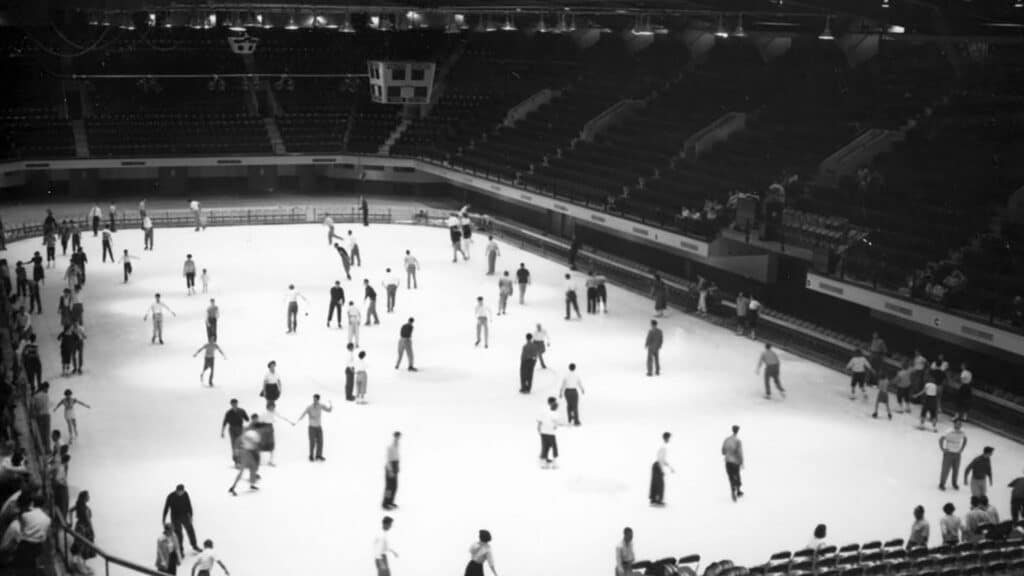
Open skating was held for four years, before the ice-making equipment started damaging the moveable hardwood floor. In all, it brought $48,755.40 to the athletic department’s operating budget during that time.
Famous Olympic-champion skaters like Sonja Henie and Dick Button performed at Reynolds, and NC State football tailback Bill Thompson, a native of Canada, spent summers after his career ended giving ice skating lessons at the coliseum.
Opening for Hockey
After years of successful general-admission skating, NC State invested another $10,000 to purchase a hockey rink, with the hopes of attracting a minor league franchise from the East Coast Hockey League to the capital of North Carolina.
“We already had the ice equipment installed when the building was completed in 1949,” Betts said in 1952. “We’ve put in lights and other equipment for the ice shows, so we figured it wouldn’t take too much more to make a hockey rink out of it.”
Initially, hockey games were a tough sell, because of the unfamiliarity of the game in the local community.
“Most people in this area have never seen a hockey game,” Betts said. “I’ve heard a lot of them say they would like to see at least one, so I know we can sell tickets for the first game. Whether we can build up regular hockey fans, like football and baseball, is something we’ll have to see when the novelty wears off.
“But I believe a new sport in this area would go over.”
On April 18-19, 1952, the Boston Olympics and the New Haven Tomahawks of the Eastern Hockey League played what was billed as the first professional hockey games in the South, with back-to-back contests at Reynolds, as the athletics department debuted its 85-by-200-feet official hockey rink.
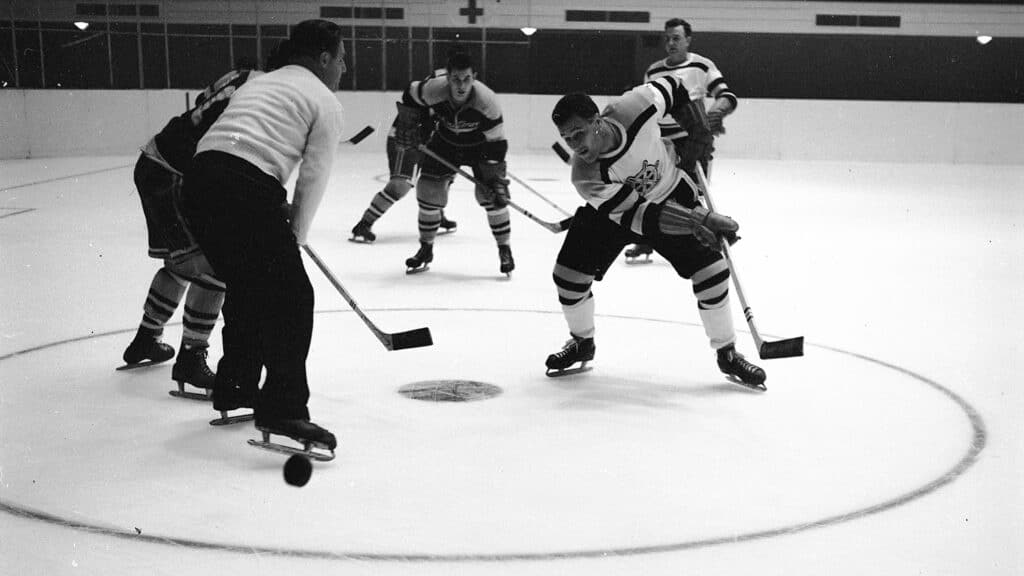
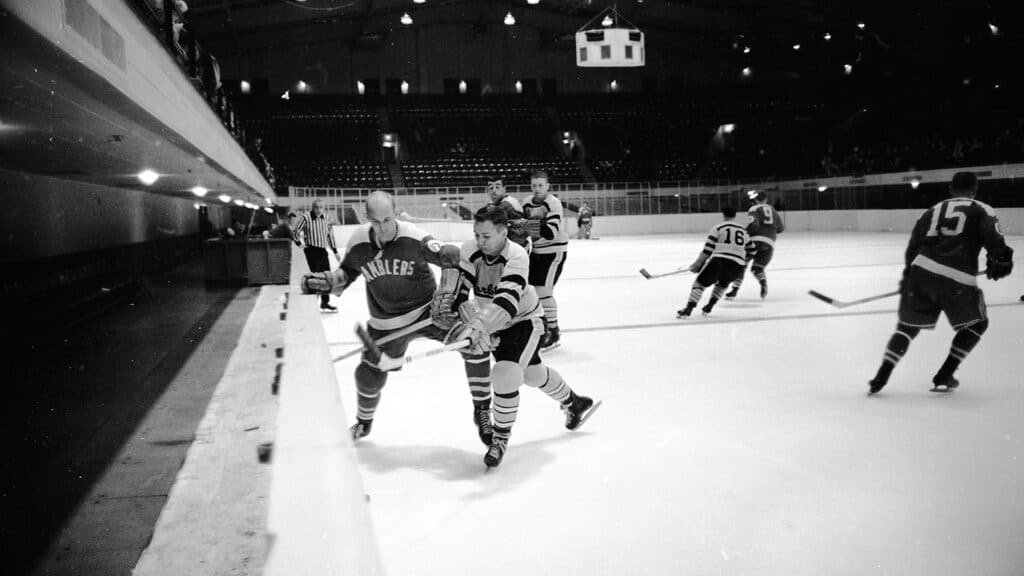
The games, heavily hyped by Clark and by newspapers statewide, were successful.
Late in the EHL’s 1956 season, when the Baltimore Clippers home arena burned down with 12 contests remaining in the home schedule, that franchise moved to the newly opened Charlotte Coliseum, which followed NC State’s lead in installing ice-making equipment during construction.
Because of the success of the team and the support of the local fans, the franchise permanently moved to Charlotte after the season. On Oct. 27, 1956, the renamed Charlotte Clippers hosted the Johnstown Jets in an EHL regular-season game in Reynolds.
Technician, NC State’s student newspaper, previewed it like this: “A sports drama entitled ‘Assault with Intent to Score,’ or ‘Mayhem on Ice’ will be given at Reynolds Coliseum here Saturday night.”
In 1958, the Charlotte Clippers played EHL exhibition games against the Philadelphia Ramblers in Reynolds, as Raleigh and Greensboro both toyed with the idea of adding minor league hockey. Public tickets were between $1.50 and $2.50, but students could buy general admission seats for 90 cents.
When Greensboro built its new arena in 1959, it was also fit for hockey.
The exhibition and regular-season games in Reynolds were popular, drawing more than 5,000 spectators to see the exotic sport but sight-lines in the elongated coliseum were not great and the ice-making equipment began to damage the floor. Public skating was abandoned in 1958, though the coliseum continued to utilize a portable ice rink for week-long nationally traveling shows, including the Ice Capades, an early version of Disney on Ice and other special events.
Hockey exhibitions were played at the new Fairgrounds (now Dorton) Arena when it opened in 1956 and it eventually became home for the Raleigh IceCaps, a popular minor league franchise in the East Coast Hockey League from 1991-97 that was displaced to Augusta, Georgia, when the Hurricanes arrived.
In 1974, NC State established its own hockey club team, which is still competing with nonvarsity status. The IcePack will play North Carolina on Monday night on the NHL rink at Carter-Finley Stadium.
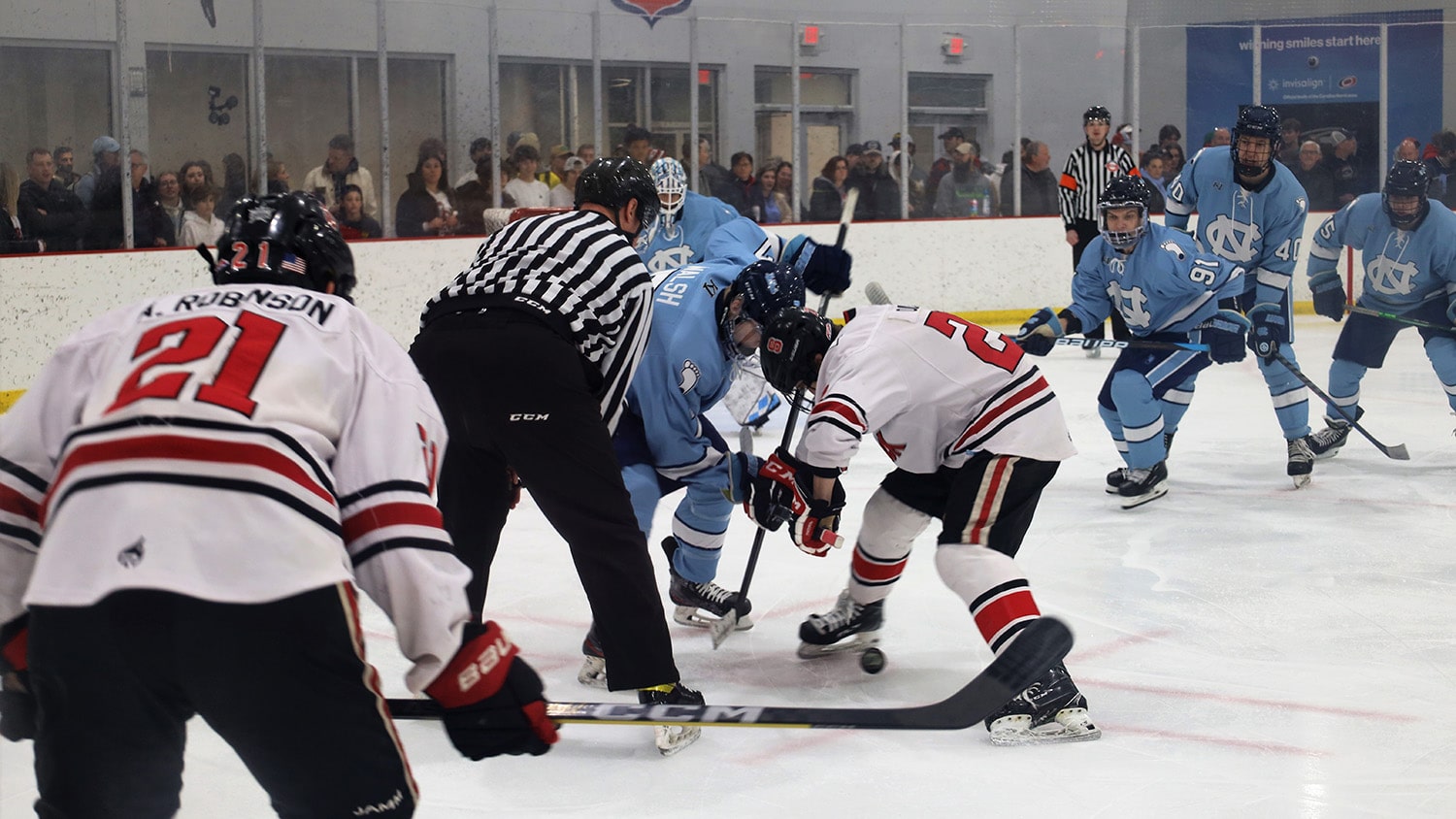
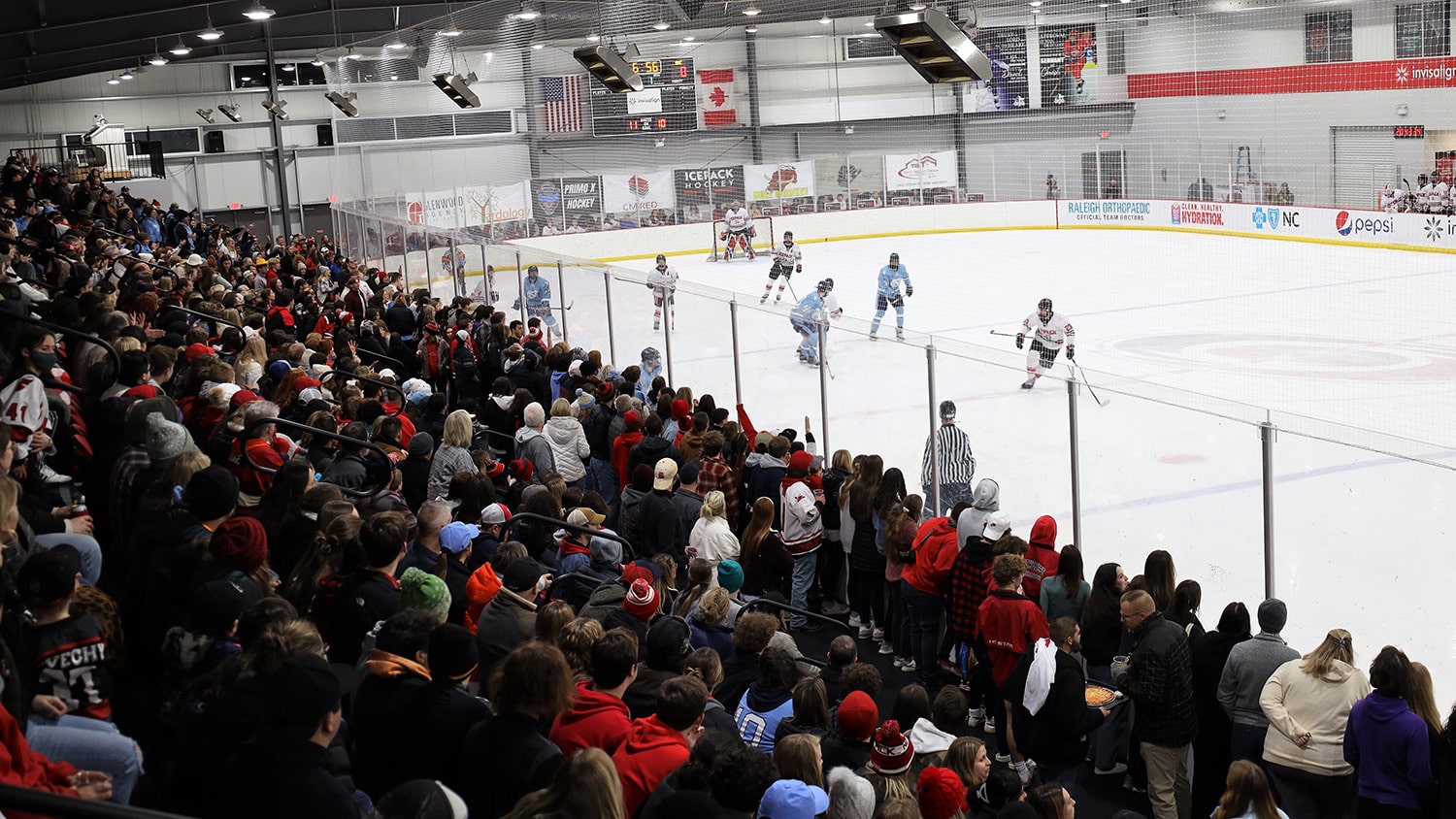
A Joint Partnership
When NHL Hall of Fame hockey player Rod Brind’Amour was traded to the Carolina Hurricanes in the winter of 2000, he was unsure about the atmosphere for hockey he was moving into. The native of Canada, however, almost immediately became an NC State fan.
“Two days after I got here, I went to a State-Carolina basketball game,” says Brind’Amour, who is in his fourth year as the Hurricanes coach and has taken the franchise to three consecutive playoff appearances. “The atmosphere was incredible. I looked over saw Torry Holt in the box next to me.

“That’s when I realized I was in a major league city for more than just one sport. I also knew that if you lived here, you had to decide on a college team.”
It didn’t hurt that Brind’Amour married into a legendary Wolfpack family. His wife Amy and her sister Traci were both members of the NC State dance team, and their parents, Eddie and Barbara Biedenbach, were both NC State student-athletes. Eddie Biedenbach was a star basketball player and coach in Reynolds’ heyday, while Barbara was a member of the fencing team and a varsity cheerleader.
“For family reasons, I have to be an NC State fan,” he says. “But ever since I’ve been here, the partnership between the school and the franchise has been great, and events like the Stadium Series will only make it stronger.
“We needed to carve out our own niche here, and now as people continue to move into the area at record rates, we are a rooted part of the Raleigh community.”
- Categories:


